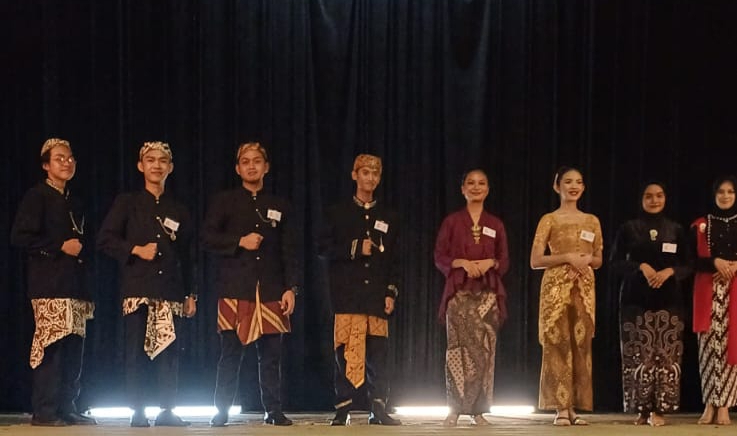
Getting To Know Japanese Traditional Culture
On Friday, December 10, the Japanese Study Program held the fifth series of general lectures, featuring Associate Prof. Itou Naoko from Hiroshima University, Japan delivering her presentation on Japanese traditional culture. The lecture was attended by more than 170 members of the academia of the Faculty of Cultural Sciences and the general public. This series is part of the 63rd Anniversary of the faculty and part of Unpad’s effort to become a world class university.
Prof. Itou Naoko is an academician in the field of Japanese cultural heritage at the University of Hiroshima. Her research interest is in the ancient Indonesian religious art and the history of Japanese traditional craft. He has advised international students, including Indonesian students from Universitas Padjadjaran.
In this series, Prof. Itou delivered her presentation entitled “Tradition and Culture at School Education in Japan: Current Situations and the Issue of Handicrafts”. The selection of this theme was based on a discussion with the Japanese Study Program on the increased student interest in themes related to Japanese traditional culture, both material and non-material. At the end of her lecture, Prof. Itou gave an overview of the types of research on Japanese traditional culture that the students of the Japanese study program can pursue. This was expected to broaden the students’ horizon in analyzing aspects of Japanese traditional culture.
In addition, Prof. Itou also elaborated that in order to instill love and pride of traditional culture, one needs to incorporate two principles in oneself: “mottainai” and “mono no aware”. The mottainai principle maintains that everything is valuable, and thus it should never be wasted and has to be utilized to the best of its uses. This is the principle that many Japanese craft artists belief in in creating craftwork that is highly valuable and durable. The other principle, mono no aware, is an aesthetic principle of fineness and familiarity in appreciating whatever is being touched or beholden.
Globalization unsurprisingly has reduced the Japanese people’s pride of their own tradition and traditional culture. In order to grow and reinforce this sense of pride in the younger generations, the Japanese government, the ministry of education in particular, has attempted to incorporate subjects on tradition and traditional culture into the education curricula from kindergarten to higher education.
These subjects are adjusted according to the level of education. For instance, in kindergarten, children are introduced to the tea drinking ceremony or ochakai as well as Japanese traditional toys. In elementary school, students are encouraged to actively participate in traditional celebrations or matsuri, by playing traditional musical instruments or performing traditional dances. In middle school, besides taking part in matsuri and practicing traditional sports, such as sumo, the students are also instructed to create traditional craftwork, such as bamboo craft or traditional painting. In high school, the number of traditional and cultural products are increased even more. At university level, students are expected to learn the history of and the steps in creating traditional cultural products. Comprehending the lengthy process through which cultural items are produced is expected to grow and reinforce the pride in tradition and traditional culture.
Prof. Itou ended her presentation by asking the participants to appreciate the Indonesian tradition and traditional culture, which can be started from understanding the long history of a certain tradition and culture.
Translated from a report by Indah Fitriani


